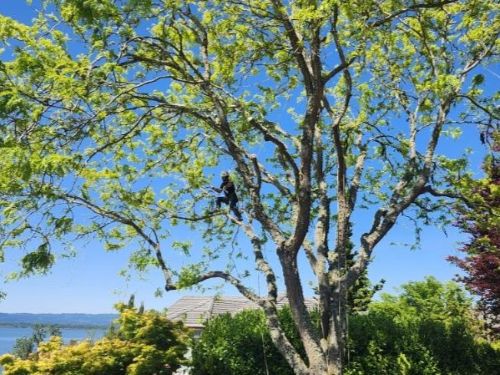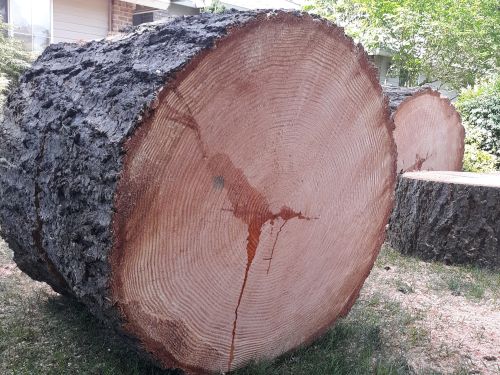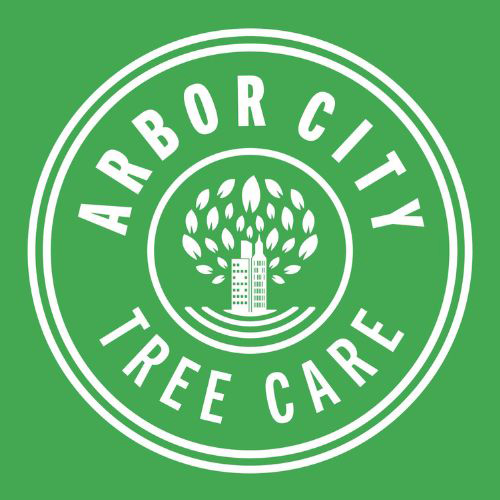How to Identify Dying or Hazardous Trees and When to Call a Professional
Healthy trees add beauty, shade, and value to your property, but when they begin to decline, they can quickly turn into safety hazards. Recognizing the signs of unhealthy trees early can prevent property damage, injury, and the spread of disease to other plants in your landscape. Whether you’re a homeowner, property manager, or business owner, learning to spot these warning signs and knowing when to call a professional tree service can make all the difference.

Common Signs of Tree Decline
Discolored or Wilting Leaves
One of the first visible signs of tree distress is discoloration or wilting foliage. Leaves that turn yellow, brown, or have unusual spotting may indicate nutrient deficiencies, overwatering, root rot, or pest infestations. If leaf discoloration occurs outside of normal seasonal changes, it’s time for a closer inspection.
Dead or Falling Branches
Frequent branch drop or visibly dead limbs can indicate serious internal problems. Dead branches may result from disease, decay, or lack of nutrients reaching that part of the tree. If large branches fall without reason, this can be a safety concern—especially near buildings, sidewalks, or vehicles.
Cracks or Splits in the Trunk
A healthy tree trunk should be solid and uniform. Cracks, splits, or cavities in the trunk often suggest internal decay or structural instability. When these issues are left unaddressed, they can lead to complete tree failure during strong winds or storms.
Fungal Growth or Mushrooms
Mushrooms or fungal growth near the base of a tree or along its trunk are strong indicators of decay. Fungi feed on decomposing wood, meaning the internal structure of the tree may already be compromised. This is a serious warning sign that should be evaluated by a certified arborist.
Peeling or Missing Bark
When a tree’s bark begins to peel excessively or large sections fall off, it could be a sign of disease, insect infestation, or internal rot. The bark serves as the tree’s protective layer—so when it’s missing, the tree becomes more vulnerable to external stressors and pathogens.
Sparse or Uneven Canopy
A thinning canopy or uneven leaf growth pattern indicates poor health. This may be due to root damage, poor soil conditions, or pest activity. Trees should have a balanced canopy; when one side looks fuller or greener than the other, something is interfering with nutrient distribution.
Insect Damage or Infestation
Signs of insect infestation include visible holes in leaves or bark, sawdust-like material near the trunk, or sticky residue (honeydew) left behind by pests like aphids. Certain insects, such as borers, can cause severe internal damage that weakens the entire tree over time.
When to Call a Professional Arborist
Not every sign of stress means your tree is beyond saving—but diagnosing the cause can be complex. A professional tree inspection helps identify whether pruning, fertilization, or removal is the best solution. You should contact an arborist if you notice:
- Large dead branches over your home, driveway, or power lines
- Fungal growth or hollow sections in the trunk
- Rapid leaf loss during the growing season
- Leaning trees or exposed roots after a storm
Certified arborists can perform a tree risk assessment, test for diseases, and recommend targeted treatments to restore health or safely remove hazardous trees.
Looking for Help with Dying or Dead Trees?
Call Our Team at Arbor City Tree Care!
Preventing Tree Health Problems
Prevention is key to maintaining strong, safe trees. Routine tree maintenance such as pruning, soil aeration, and proper watering supports long-term health. Annual inspections also allow early detection of issues before they become severe. Additionally, avoid compacting soil around the root zone and ensure mulch is applied correctly to retain moisture without smothering the roots.
Maintaining Safe and Healthy Trees Year-Round
Recognizing the signs of unhealthy trees early can protect your property and ensure your landscape remains safe and vibrant. Dead branches, discoloration, fungal growth, or structural damage are not just cosmetic issues—they can pose real safety risks. By partnering with a professional tree care service, you can detect problems early, preserve tree health, and prevent costly damage down the road. Healthy trees don’t just enhance your property—they provide environmental benefits and peace of mind for years to come.

